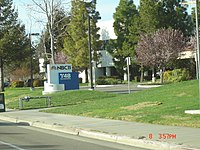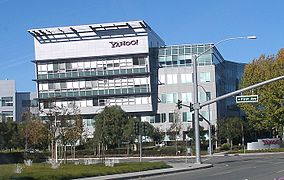Media in the San Francisco Bay Area

The media in the San Francisco Bay Area has historically focused on


The first newspaper published by Americans in California was
The press that once printed The Californian was moved to the Sacramento area to be used on the Placer Times. The press was again moved and began publishing the Motherlode's first paper, the Sonora Herald, then taken to Columbia to print the Columbia Star. Within a few years of the discovery of gold, mother lode towns all had multiple competing journals. Before 1860, California had 57 newspapers and periodicals serving an average readership of 290,000.
James King of William began publishing the Daily Evening Bulletin in San Francisco in October, 1855 and built it into the highest circulation paper in the city. He criticized a city supervisor named James P. Casey, who, on the afternoon of the story about him, ran in the paper, shot and mortally wounded King. Casey was lynched by the early vigilante committee. The Morning Call was established and began publishing in December 1856, and later merged with the Bulletin to become the long-running Call-Bulletin. The San Francisco Chronicle debuted in June, 1865 as the Dramatic Chronicle, founded by Charles and M.H. de Young aged 19 and 17.
In 1887, young William Randolph Hearst took over his father's Daily Examiner, which became the flagship of his national chain.
The oldest African-American newspaper, still active in the 1930s, was the California Eagle. It appeared first in Los Angeles in 1879. The first French journals, the Californien and the Gazette Republicane both began in 1850, and were followed by the Courrier du Pacifique in 1852. Both the first German and first Italian papers, the California Demokrat (1852) and the Voce del Popolo (1859) were founded in San Francisco and had long runs. Chinese in California have published many newspapers, the first being the Gold Hills News in 1854.
Noted journalists, writers, cartoonists and publishers have passed through San Francisco's media world, including:
By the early decades of the 20th century, San Francisco supported four major dailies and numerous influential weeklies. The dailies were the
Today, several newspapers, covering community, regional, national, and international news, and community-specific papers, catering to niche markets and individual neighborhoods, are in circulation in the San Francisco Bay Area. The major
Newspapers

- East Bay Times (Walnut Creek) – daily broadsheet
- The Daily News (Palo Alto) – weekly tabloid
- East Bay Express (Oakland) – weekly alternative
- Marin Independent Journal (Novato) – daily broadsheet
- The Epoch Times (California) – weekly broadsheet
- The Mercury News (San Jose) – daily broadsheet
- Metro Silicon Valley (San Jose) – weekly alternative
- El Observador (San Jose) – Spanish/English bilingual weekly
- Palo Alto Daily Post (Palo Alto) – daily tabloid
- Palo Alto Weekly (Palo Alto) – weekly tabloid
- The Recorder (San Francisco) – daily legal newspaper
- San Francisco Business Times (San Francisco) – weekly business
- San Francisco Chronicle (San Francisco) – daily broadsheet
- San Francisco Daily Journal (San Francisco) – daily legal newspaper
- The San Francisco Examiner (San Francisco) – daily tabloid
- Silicon Valley Business Journal(San Jose) – weekly business
- Alameda Sun (Alameda) – weekly tabloid
- Castro Valley Forum (Castro Valley) – weekly tabloid
- Several other community-based papers, published on a daily or weekly basis
- Former newspapers
- Alameda Times-Star (Alameda)
- The Argus (Fremont) – daily broadsheet
- Contra Costa Times(Walnut Creek) – daily broadsheet
- Daily Review (Hayward) – daily broadsheet
- Oakland Tribune (Oakland) – daily broadsheet
- Peninsula Times Tribune (Palo Alto) – daily broadsheet
- Redwood City Daily News (Redwood City) – daily tabloid
- San Francisco Bay Guardian – weekly alternative
- San Francisco Progress – thrice-weekly broadsheet[1]
- SF Weekly (San Francisco) – weekly walternative
- San Mateo County Times (San Mateo) – daily broadsheet
- Ethnic newspapers
Aside from the major English broadsheets, the Bay Area also publishes newspapers catering to the large ethnic communities in the region, including:
- Calitoday (San Jose) – Vietnamese/English bilingual semiweekly
- The Epoch Times (San Francisco) – Chinese daily broadsheet
- Hromada (Corte Madera[2]) - Ukrainian - It was co-created in 2017 by Lesya Castillo, who in 2022 served as the main editor.[3]
- International Daily News (San Francisco) – Chinese daily broadsheet
- Kanzhongguo Times (Milpitas) – Chinese
- The Oakland Post(Oakland) – African American
- San Francisco Bay View (San Francisco) – African American
- Sing Tao Daily (Brisbane) – Chinese daily broadsheet
- Vietnam Daily News (San Jose) – Vietnamese daily
- Vision Hispana (Alameda) – Hispanic
- World Journal (San Francisco) – Chinese daily broadsheet
- Several other Asian and Hispanic newspapers
- Former ethnic newspapers
- Cái Đình Làng (San Francisco) – Vietnamese[4][5]
- Nuevo Mundo (San Jose) – Spanish weekly
- SaigonUSA (San Jose) – Vietnamese semiweekly
- Thái Bình (San Francisco) – Vietnamese[4][5]
- Trống Đồng (San Jose) – Vietnamese weekly
- Viet Mercury (San Jose) – Vietnamese weekly
- East West The Chinese American Journal (San Francisco) – Chinese English weekly
- Việt Nam Tự Do (San Jose) – Vietnamese daily
- Viet Tribune (San Jose) – Vietnamese weekly
- Vietnam Family (Gia Đình, San Jose) – Vietnamese weekly
- Vietnam Mom (Mẹ Việt Nam, San Jose) – Vietnamese monthly
- Vietnam Times (Thời Báo, San Jose) – Vietnamese daily[6][7]
- VTimes (San Jose) – Vietnamese
Several
- The Advocate (Contra Costa College) – weekly broadsheet
- The Campanil (Mills College)[8]
- The Daily Californian (UC Berkeley) – daily broadsheet
- Golden Gate XPress (San Francisco State University)[9]
- Pioneer (CSU Hayward)[10]– weekly
- San Francisco Foghorn (University of San Francisco)[11] – weekly tabloid
- The Santa Clara (Santa Clara University) – weekly tabloid
- Spartan Daily (San Jose State University)[12] – thrice-weekly broadsheet
- The Stanford Daily (Stanford University) – daily broadsheet
- Synapse (UC San Francisco)
Magazines
- 7x7
- Afar
- Bay Nature
- The Believer
- Bob Cut Mag
- The Bold Italic
- Dwell
- Hyphen
- McSweeney's magazine and publishing house
- Macworld
- Mother Jones
- Salon
- San Francisco magazine
- SOMA
- Sunset
- Wired
- FourTwoNine










